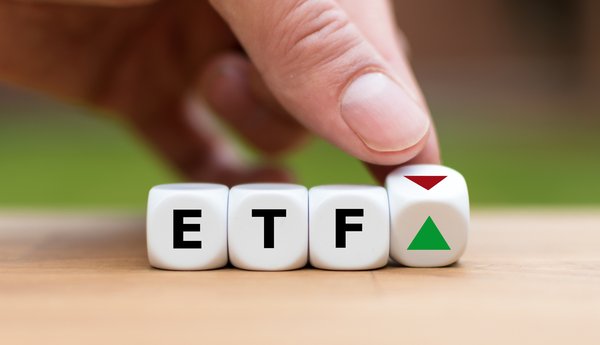Regional banking is a broad category. The short definition is that a regional bank is a chartered financial institution that has a presence in some, but not all, areas of the United States. For example, a regional bank might have hundreds of branches concentrated in the Southeast but few or no branches elsewhere in the nation.
However, it’s important to note that there is no formal definition of a regional bank. Some experts define a regional bank as one that has a presence in no more than a certain number of states, but there’s no formal cutoff. For example, some experts might consider a bank with branches in 22 states to be a regional bank, while some might label it as a national bank instead.

Generally speaking, regional banks are mostly focused on commercial banking operations (as opposed to investment banking). They have some advantages over the mega-banks, such as a more intimate knowledge of the markets in which they operate and generally less regulatory oversight, but with the cost advantages that come with large operations. Many regional banks specialize in certain types of loans, while others are broadly focused.
In this article, we’ll take a look at three of the most attractive and well-run regional banking institutions in the United States and what investors should know about each one before considering these bank stocks for their portfolio.
3 Top Regional Bank Stocks
| Bank Name (Ticker) | Market Cap | Description |
|---|---|---|
|
US Bancorp (NYSE:USB) |
$51.4 billion |
Large regional bank focused on West and Midwest U.S. |
| M&T Bank (NYSE:MTB) | $20.9 billion |
Over 1,000 branches in the Eastern U.S. |
|
Truist Financial (NYSE:TFC) |
$41.8 billion |
Large regional bank focused on Southeast and Mid-Atlantic U.S. states. |
US Bancorp
US Bancorp, better known by its U.S. Bank brand, is the largest regional bank and the fifth largest bank in the U.S. Only the “big four” -- JPMorgan Chase (JPM 0.06%), Bank of America (BAC -0.21%), Wells Fargo (WFC -0.03%), and Citigroup (C 1.41%) -- are larger.
Like most regional banks, U.S. Bank makes the bulk (about two-thirds) of its revenue from net interest income. The bank has $387 billion in outstanding loan balances as of March 2023, with large concentrations in commercial loans and mortgages, but with a substantial credit card portfolio as well. It also has a significant portion of its $510 billion deposit base in the form of noninterest-bearing deposits, which gives it somewhat of a cost advantage over many peers. Top sources of noninterest income include credit card revenue and payment processing fees, investment management fees, service charges, and mortgage revenue.
U.S. Bank is consistently profitable and has historically traded at a valuation premium to other large banks due to its top-notch asset quality and risk management.
With about $680 billion in total assets, U.S. Bank is considered a systemically important financial institution (SIFI), which is often informally referred to as “too big to fail.” This means that U.S. Bank is subject to more regulatory oversight than smaller banks and that its deposits (even the uninsured portion) are considered to be completely safe. This could actually work in U.S. Bank’s favor in the recent regional banking turmoil, as many large-balance accounts have flowed out of smaller banks in favor of the safety of larger institutions.
M&T Bank
M&T Bank is based in Buffalo, New York, and is concentrated in the Northeast and Mid-Atlantic regions of the U.S., with branches from Maine to Virginia. It has about $203 billion in total assets, which makes it a large regional bank, but unlike the other two on this list, M&T is below the $250 billion threshold to be considered a SIFI.
About 75% of M&T’s revenue comes from net interest income, with service charges, mortgage revenue, and trust income making up some of the largest sources of other income.
M&T Bank has a history of excellent risk management and profitability, even in difficult environments. In fact, M&T was the only bank in the S&P 500 index to maintain its dividend throughout the financial crisis. The bank has earned a profit in every quarter since 1976. Its net interest margin is over 4% in 2023 and is expected to stay there, making it one of the more profitable regional banks in the market. The bank has strong asset quality, with a 0.22% net charge-off rate, one of the lowest of its peer group.
Because of its excellent balance sheet and financial flexibility, M&T has grown significantly through acquisitions in recent years and has the ability to take advantage of attractive opportunities in tough times. For example, in the early days of the COVID-19 pandemic, the bank made its largest-ever acquisition (People’s United) in 2022.
Truist Financial
Truist Financial is one of the largest regional banks and the seventh-largest bank of any kind in the United States. Headquartered in Charlotte, North Carolina, Truist was formed through the merger of BB&T and SunTrust and has a full range of commercial banking services. Its branches are concentrated in the Mid-Atlantic and Southeast regions of the U.S.
Truist has $326 billion in loans and leases on its balance sheet, with about 60% in the form of commercial loans and $408 billion in deposits. Like most regional banks, Truist pays slightly higher interest rates on deposit accounts than the mega-banks, but not quite as much as smaller and online-based institutions. As a result, it hasn’t seen its deposit base shrink in the rising-rate environment to the extent that the big banks have (down about 4% from its peak versus 8% for JPMorgan Chase (JPM 0.06%), for example).
About 64% of Truist’s income is from interest on loans, and its recent 3.1% core net interest margin is one of the better spreads among the large banks. Other income is from wealth management fees, payment processing fees, mortgage fees, and from its insurance subsidiary.
Truist has relatively strong asset quality, and while loan charge-off rates have been on a general uptrend industry-wide over the past year or so due to inflationary and interest rate pressures, Truist’s have risen less than most. In fact, Truist is one of the few big banks whose nonperforming loan ratio was flat year over year in early 2023.
Truist has a relatively high percentage of FDIC-insured deposits (57%), with 86% of its retail and small business banking deposits covered. The average customer has been with Truist (in the form of its predecessors' companies) for 17 years, and on average, Truist has the leading deposit share in its markets. What’s more, because it has well over $250 billion in total assets, Truist is considered a systemically important financial institution, or SIFI, which means that it is subjected to a greater level of regulatory scrutiny than most other regional banks.
Related investment topics
Are regional bank stocks right for you?
Regional banks certainly come with additional risk compared to the mega-banks, although these three are certainly on the lower end of the regional bank risk spectrum. Plus, some regional banks specialize in certain types of loans, such as mortgages or credit cards, and these can be vulnerable to headwinds in their biggest markets. But if you want exposure to financial stocks and have a relatively high risk tolerance, regional banks can be highly profitable businesses.
It’s also worth noting that if you aren’t comfortable choosing individual regional banks to invest in, you can take the ETF route. A good example is the SPDR S&P Regional Banking ETF, which is an index fund that invests in a portfolio of 144 different regional bank stocks. Truist and M&T are among the top holdings, and no single stock makes up more than 4.2% of the fund’s assets, making it a good choice for diversified exposure to the opportunities in regional banking.
















